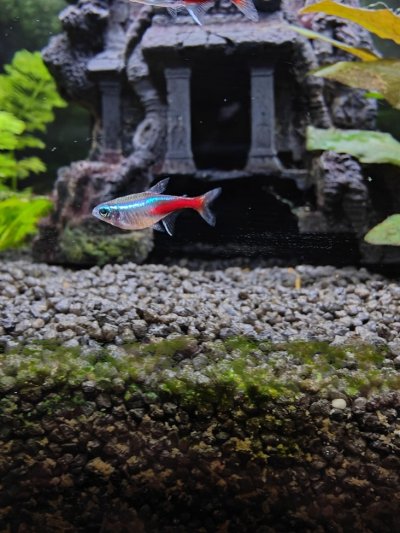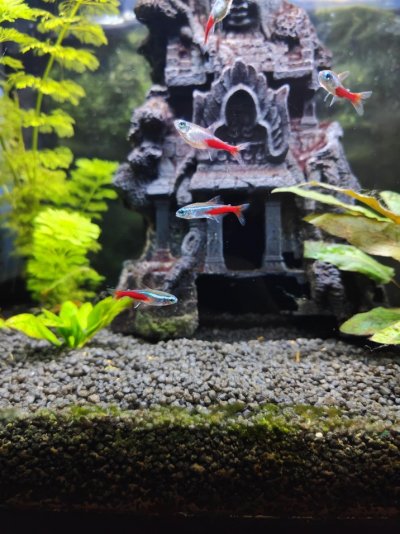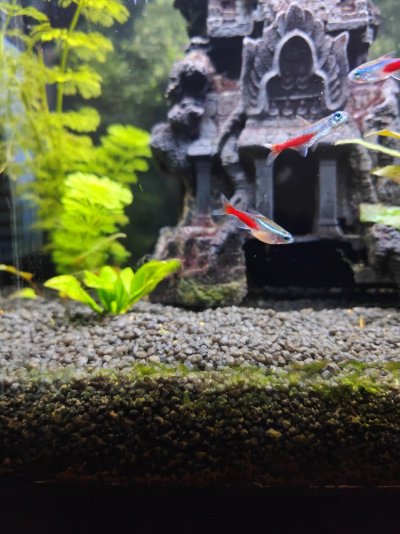As for feeding, the fish should really be fed 2-3 times per day because the shop and the farm that bred them probably fed them at least that often. The secret to not overfeeding is to think of the amount of food you feed in a day as a pizza pie. There is a set amount you should feed during a day. If you feed once a day ( not the recommended way BTW ) you feed it all. If you feed 2 times per day, you split the total amount in half and only feed the half at each feeding. If you feed 3 times a day, you feed 1/3 of the total amount at each feeding. You could feed 8 times a day as long as you only feed 1/8 of the total amount at each feeding. The way to figure out how much food you need in a whole day is to roughly measure 2 equal piles of food. Feed one pile. If the fish finish the one pile in under 2 minutes, you need to add more and increase the amount in the pile you didn't feed. Do it again for the next feedings. Once you see how much the fish eat in a day, you have your total amount of food.

A good way to feed your fish and keep them healthy is to feed multiple types of foods so the rule of thumb is always " as much as they will eat in 2-3 minutes " at each feeding.
Now, if you see that the first amount was too much and there is plenty of food left over after 3 minutes, you should remove it from the tank with either a net or siphon hose. This will help keep the snail population in check. At the next feeding reduce the amount of food you feed until you zero in on how much you need to feed.

You will probably find that the fish will not eat the same amount at each feeding which is why you use the clock as much as the amount of food.
Hope this didn't confuse you.






 Breeding Neons on purpose usually requires a separate tank and the removal of the pair after spawning. People who get successful fry in a community tank get them by luck, not skill. An egg or 2 or 3 finds it's way into a space the parents or other fish can't get to so they survive. Considering that a Neon can lay between 50 to 100+ eggs at a spawning, having only 1 or 2 or 3 survive is not a good ratio.
Breeding Neons on purpose usually requires a separate tank and the removal of the pair after spawning. People who get successful fry in a community tank get them by luck, not skill. An egg or 2 or 3 finds it's way into a space the parents or other fish can't get to so they survive. Considering that a Neon can lay between 50 to 100+ eggs at a spawning, having only 1 or 2 or 3 survive is not a good ratio.